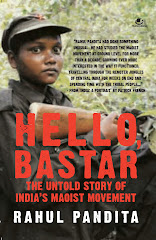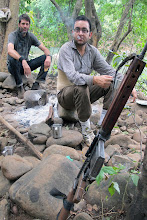
The story of an award-winning, upper-caste Geologist who is silently changing the lives of underprivileged children, most of them from lower castes, in a remote corner of India.
A fan has finally started working. But it is not that electricity has reached Kunaura, a small village, around 23 miles from Lucknow, the capital of eastern state of Uttar Pradesh, one of the major centres of rebellion during India’s first war of Independence in 1857. It’s because of a few solar panels which have been erected on the top of the Bhartiya Grameen Vidyalaya (Indian rural school) building, which has been running here for the past 35 years.
More than the blades of the fan, this new development has energized Dr. S.B Misra and his wife Nirmala. With the searing summer heat already knocking at the doors, they are glad that at least children in one classroom can breathe easy now.
The fan is a milestone in a journey which began in Canada in 1967 with three words: Kya kiya jaaye? (What to do?). As a young Geologist, Dr. Misra had come a long way from his village, adjacent to Kunaura. Though the village was not very far from Lucknow, it was light years away from development. As a child, Dr. Misra had walked for hours on non-existent roads to attend school. He had studied hard during hot summer nights, devoid of electricity. And now, in Canada, his entire future lay in front of him – bright and promising. More so after he had made a very important discovery – a 565-million-year-old fossil that is the oldest record of multi-cellular life on earth.
But 1967 was also the year when parts of India reeled under a severe drought. And then there were those three words: Kya kiya jaaye? which Dr. Misra and his friends had scribbled on a notebook.
It was time to make some tough decisions.
By the time Misra returned to India, and got married to Nirmala, the foundations of Bhartiya Grameen Vidyalaya (BGV) had been laid.
 In 2008, the roll-call in the school is 720 students. A majority of them are from the lower castes. It’s not that they don’t have an option of studying in the nearby government schools. “It’s because BGV is as renowned as Welhams (a very renowned school in India) here,” quips Dr. Misra.
In 2008, the roll-call in the school is 720 students. A majority of them are from the lower castes. It’s not that they don’t have an option of studying in the nearby government schools. “It’s because BGV is as renowned as Welhams (a very renowned school in India) here,” quips Dr. Misra.As we enter the school premises, the classes are on, and except the sound of recitation of tables from a junior class, there is not a whimper of sound to be heard anywhere. Nirmala, who is the principal of the school, looks at the campus and a faint smile appears on her lips. “It was my husband’s dream, but for me it became the greatest challenge of my life,” she says.
On May 14 in 1972, Dr. Misra and Nirmala got married. Dr. Misra had laid only one condition for marriage: The girl should share his vision of a school for the rural children. Before marriage, Nirmala had never seen a village but she had a passion for teaching. In less than two months after her marriage, the couple landed at Kunaura. Initially, Nirmala would make a round of villages, asking people to send their children to the school. “In order to avoid offending local customs, I would draw a veil over my face while talking to them,” remembers Nirmala. In between, a rumour spread that Misra had come back because his mental condition was not fit and he had been advised to take rest. Nevertheless, in the first year, fifty students joined the school.
 A few of Misra’s colleagues, who shared his passion also helped initially. One of them was VVN Rao, a physicist, who helped build the school building.
A few of Misra’s colleagues, who shared his passion also helped initially. One of them was VVN Rao, a physicist, who helped build the school building.But in two years, all of Misra’s savings were exhausted. So it was decided that one of them would have to take up a job. “Since it was I who would earn more salary, I left,” says Dr. Misra.
 Meanwhile, Nirmala had given birth to twin sons. And now, in the absence of her husband, she was required to run the school. That meant a walk of eight miles to school and then the same distance to reach home. There were no roads and during monsoons, the narrow path would turn into a swamp. “Nirmala didi would cross through knee-high slush of mud and dung and then, after reaching school, she would change into a spare sari kept in her bag,” remembers a teacher, who has been with the school since beginning. Later on, the kids joined their father in Nainital where Dr. Misra had taken up a job, while Nirmala kept running the school.
Meanwhile, Nirmala had given birth to twin sons. And now, in the absence of her husband, she was required to run the school. That meant a walk of eight miles to school and then the same distance to reach home. There were no roads and during monsoons, the narrow path would turn into a swamp. “Nirmala didi would cross through knee-high slush of mud and dung and then, after reaching school, she would change into a spare sari kept in her bag,” remembers a teacher, who has been with the school since beginning. Later on, the kids joined their father in Nainital where Dr. Misra had taken up a job, while Nirmala kept running the school.In all these years, BGV has literally changed the face of this part of Uttar Pradesh. The first child who went to school from a village called Jafarpurua – known for producing dacoits – came to BGV. Today, another boy from this village, who studied at this school and went on to complete his Masters in Economics teaches here. Another teacher, Banke Lal cycles to school every day from his village, 13 miles away. “Every day, a few staff members of a nearby school accost me, and put pressure on me to join them, but I always refuse.”
 For parents here, it’s a tough decision sending their children to BGV. In government schools, they provide children with meals, something that BGV cannot afford. “One day I asked a child if he was feeling well. He said no; he had a stomach ache. I realised later that he was simply hungry,” remembers Dr. Misra. Another positive development has been a steady increase in the enrollment of Muslim children. “Those families now prefer our school to their madrassas,” says Nirmala.
For parents here, it’s a tough decision sending their children to BGV. In government schools, they provide children with meals, something that BGV cannot afford. “One day I asked a child if he was feeling well. He said no; he had a stomach ache. I realised later that he was simply hungry,” remembers Dr. Misra. Another positive development has been a steady increase in the enrollment of Muslim children. “Those families now prefer our school to their madrassas,” says Nirmala.Even after these years, the lack of funds means that there still is no electricity in the school. “Bringing it to the school will cost 50,000 rupees which we don’t have right now,” rues Dr. Misra. Recently an Indian company and an NRI has donated some money but there is a lot that needs to be done. The temporary roof over few classrooms needs to be changed. Pointing towards her chair, Nirmala says, “ This is the chair I got here in 1972.”
How difficult has it been to run this school? “It’s a battle between Eklavya and Arjuna,” says Dr. Misra.
In the meantime, the fossil Dr. Misra had discovered in Canada has just been named after him – Fractofusus misrai. Initially, a deep conspiracy had taken place, hatched by Western scientists to deprive Dr. Misra of his credit. But his family fought a sustained battle; one of his sons actually learnt HTML programming to put his father’s case on the Internet. And finally, the Misras won.
Dr. Misra is now writing a story of his life in his book, The story of an ordinary Indian, which will appear later this year. But for him, it is, perhaps, this school which is his reply to the eternal quest of Kya kiya jaaye.
(The school really needs support. Those who want to help can contact Dr. S.B. Misra at 91-94155-60309 or 91-522-4010 640)





10 comments:
Hello Rahul,
Great !!!
Sometimes back there was a post on intentblog by Gayatri Jayaraman - 'http://www.intentblog.com/archives/2008/02/all_kinds_of_pe.html'
Dr. Misra and his BGV - could certainly get some exposure if they make it to People Mag.
You being a contributor just like Gayatri - maybe could make that connection.
Thank you
~A
hey,i just landed up on urs,some days ago.
ur blogs ,i just hav a passion towards them.
have a beautiful day,mr.rahul.
hi.
im just an employee with the nationalised bank.
i always hav a flair for journalists,reporters,
u people r v.nice and i love u all.
goodnight.
An absolutely amazing story... The courage of Mr.Misra and Niramala is so thrilling.
If we city-bred people put in only lil bit of what they did, the nation shall soon be a different picture all too soon :)
Pooja Shali
Hi Rahul,
Even though your posts are not very frequent(which i would want!)i really look forward to them. You come up with amazing stories of real people who SURVIVED.... It makes me often sit up and think that I can do a lot with my life too.
Thanks a lot.
Thanks: Anhad, Pooja
Anupama, thanks for passing by. I know I have not been writing often. Have been juggling too much of late. But soon, something you would like to read. Soon, I promise.
Hi Rahul,
I am hoping that your soon is sooner.....
hi,rahul,thank u so much for da thanks,
with hearty wishes,rahul...........
im from coimbatore,and,if it so happens,
that u come to coimbatore,
u can have a nice stay at our home.
hi,but u can be more cheerful,i think.
u have no right to be sad...........bye,take care........
Very good story Rahul.
Post a Comment